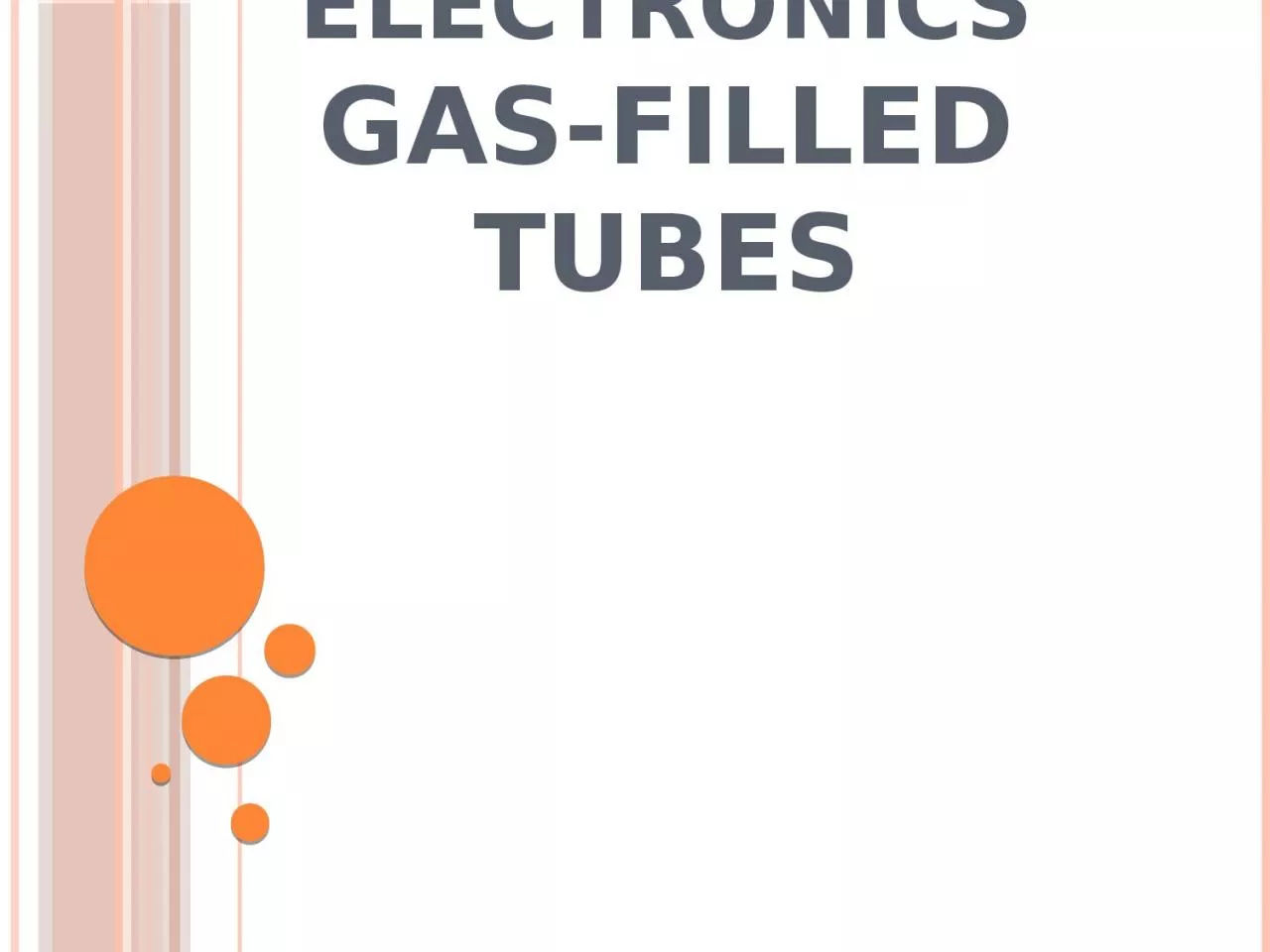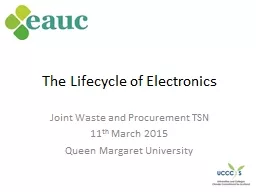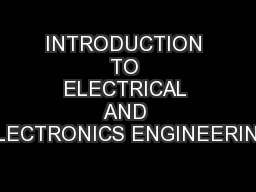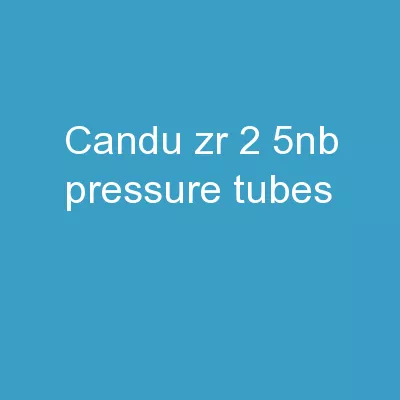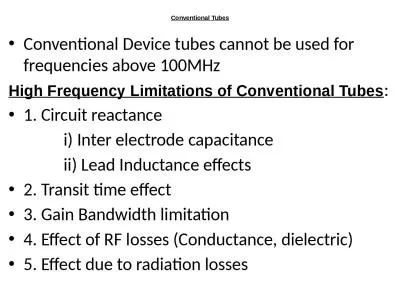PPT-Basic electronics Gas-filled Tubes
Author : delcy | Published Date : 2023-08-31
INTRODUCTION When some inert gas eg argon neon helium etc at low pressure is purposely introduced in a vacuum tube the resulting device is known as a gas filled
Presentation Embed Code
Download Presentation
Download Presentation The PPT/PDF document "Basic electronics Gas-filled Tubes" is the property of its rightful owner. Permission is granted to download and print the materials on this website for personal, non-commercial use only, and to display it on your personal computer provided you do not modify the materials and that you retain all copyright notices contained in the materials. By downloading content from our website, you accept the terms of this agreement.
Basic electronics Gas-filled Tubes: Transcript
Download Rules Of Document
"Basic electronics Gas-filled Tubes"The content belongs to its owner. You may download and print it for personal use, without modification, and keep all copyright notices. By downloading, you agree to these terms.
Related Documents

